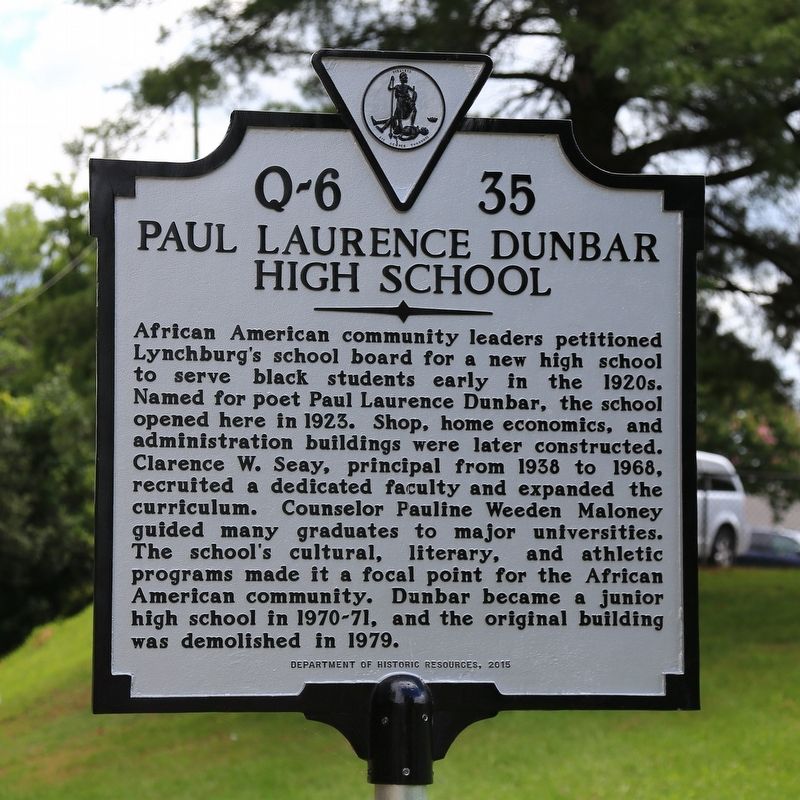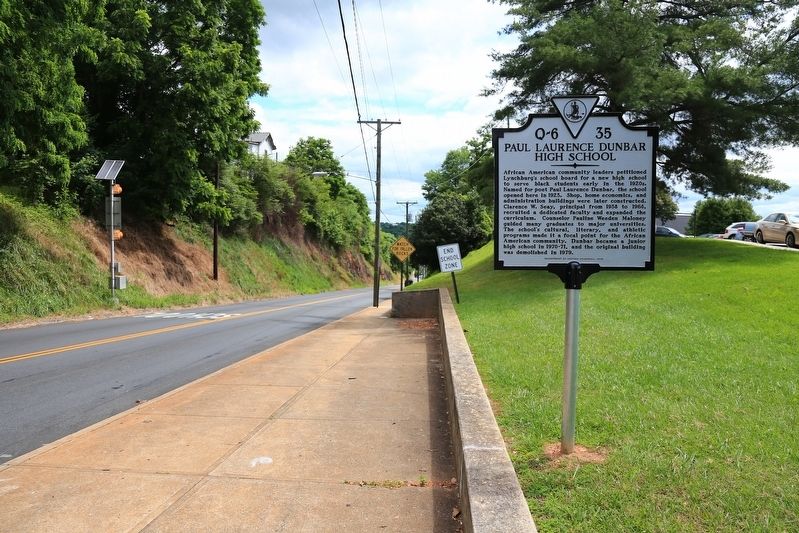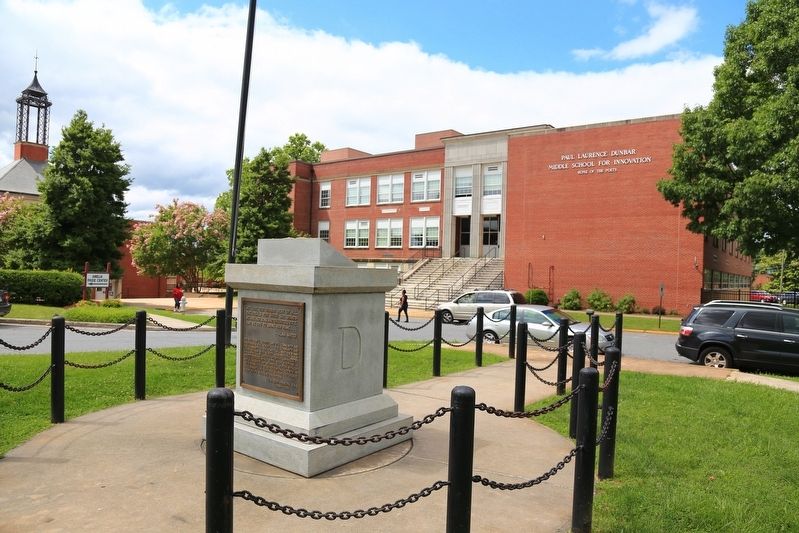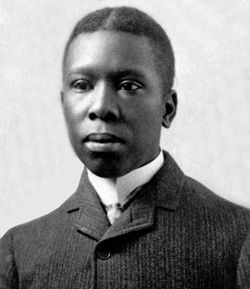College Hill in Lynchburg, Virginia — The American South (Mid-Atlantic)
Paul Laurence Dunbar High School
Erected 2015 by Department of Historic Resources. (Marker Number Q-6-35.)
Topics and series. This historical marker is listed in these topic lists: African Americans • Education. In addition, it is included in the Virginia Department of Historic Resources (DHR) series list. A significant historical year for this entry is 1923.
Location. 37° 24.502′ N, 79° 8.831′ W. Marker is in Lynchburg, Virginia. It is in College Hill. Marker is at the intersection of 12th Street and Polk Street, on the left when traveling west on 12th Street. It is at Dunbar Middle School for Innovation. Touch for map. Marker is in this post office area: Lynchburg VA 24504, United States of America. Touch for directions.
Other nearby markers. At least 8 other markers are within walking distance of this marker. Dunbar High School (a few steps from this marker); Micajah Davis House (about 400 feet away, measured in a direct line); Virginia Teachers Association (approx. 0.2 miles away); Lynchburg Civil War Hospitals (approx. 0.2 miles away); Diamond Hill Baptist Church (approx. 0.2 miles away); Jackson Street United Methodist Church (approx. 0.2 miles away); N.B. Handy House (approx. ¼ mile away); Inner Defenses (approx. ¼ mile away). Touch for a list and map of all markers in Lynchburg.
Also see . . .
1. Paul Laurence Dunbar High School. Virginia Foundation for the Humanities article in the African American Historic Sites Database. “As the 1930s progressed, African Americans moved into teaching and administrative roles at Dunbar High School. Clarence Williams Seay became the first African-American principal of the school, serving in that position from 1938 until his retirement in 1968. Under Mr. Seay’s leadership, the school continued to excel academically, focusing on meeting the needs of all African-American children in Lynchburg and offering cultural, athletic, and educational community programs. General education and vocational courses were added to the curriculum, leading to increased enrollment and graduation rates. The new curriculum became fully accredited by the 1950s.” (Submitted on June 16, 2017.)
2. Wikipedia entry for Paul Laurence Dunbar. Excerpt: “Paul Laurence Dunbar (1872–1906) was an American poet, novelist, and playwright of the late 19th and early 20th centuries. Born in Dayton, Ohio, to parents who had been enslaved in Kentucky before the American Civil War, Dunbar began to write stories and verse when still a child and was president of his high school’s literary society. He published his first poems at the age of 16 in a Dayton newspaper.
“Much of Dunbar’s more popular work in his lifetime was written in the Negro dialect associated with the antebellum South, though he also used the Midwestern regional dialect of James Whitcomb Riley. Dunbar’s work was praised by William Dean Howells, a leading editor associated with the Harper’s Weekly, and Dunbar was one of the first African-American writers to establish an international reputation. He wrote the lyrics for the musical comedy In Dahomey (1903), the first all-African-American musical produced on Broadway. The musical later also toured in the United States and the United Kingdom.
“Dunbar also wrote in conventional English in other poetry and novels; since
the late 20th century, scholars have become more interested in these other works. Suffering from tuberculosis, Dunbar died at the age of 33.” (Submitted on June 16, 2017.)
Credits. This page was last revised on February 1, 2023. It was originally submitted on June 16, 2017, by J. J. Prats of Powell, Ohio. This page has been viewed 616 times since then and 52 times this year. Photos: 1, 2, 3, 4. submitted on June 16, 2017, by J. J. Prats of Powell, Ohio.



